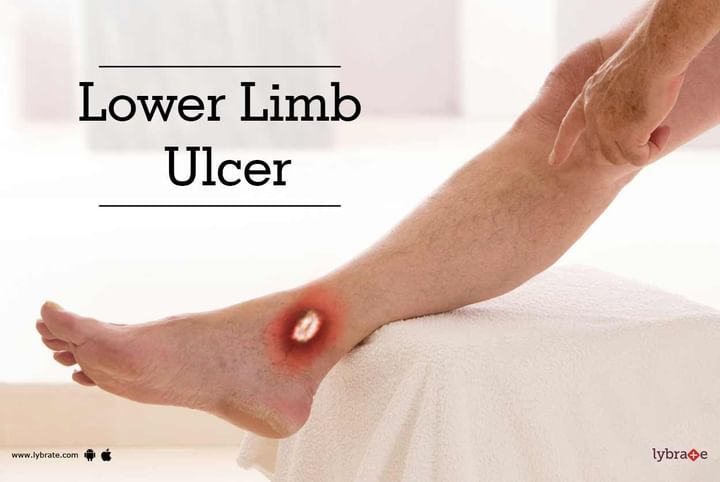Lower Limb Ulcer
A lower limb ulcer or a leg ulcer is characterized by the formation of a chronic sore. These sores take more than a month to heal, and tend to develop on the insides of the leg. It is characterized by symptoms of pain, swelling in the affected area and itching. The skin around the ulcer tends to harden and get discolored. A foul smelling discharge is also common.
Causes-
These sores tend to form if there is a minor injury in the leg. This tends to develop when the blood circulation inside the veins of the leg is hampered, that results in an increase in blood pressure. The high blood pressure can damage the vessels under the skin, making them fragile. The skin tends to break and form ulcers easily after a cut or a wound has been sustained.
There are certain factors that increase the risks of lower limb ulcer; them being:
-
Obesity: Being overweight can lead to an increase in blood pressure in the leg, augmenting the risk of lower leg ulcer (learn more to reduce obesity)
-
Varicose Veins: This disorder is characterized by swollen veins resulting from malfunctioning valves. This disorder of the veins increases the risks of lower limb ulcers.
-
Age: Ageing increases the chances of lower leg ulcer. This is because old age and its related disorders tend to limit your movement.
Symptoms-
The symptoms of lower limb include discoloration of the skin, swollen ankles, a heavy feeling in the lower limbs, flaky and itchy skin and enlarged veins in the legs. A foul smelling discharge from the wound and high fever are common symptoms as well.
Treatment-
The treatment begins with cleaning the affected area. Medicines are applied on the area, following which the dressing is applied on the wound. In order to treat the swelling and improve the circulation in the legs, a compression bandage is also wrapped around the area. These bandages help in easing the blood circulation and relieving pain.
In order to facilitate quicker healing of the ulcer, it is recommended to remain active and ditch a sedentary lifestyle completely. It is advised to keep your leg elevated while you are sitting or lying down; this helps better the blood circulation. Avoid smoking and consuming alcohol as they inevitably slow down the healing process.



+1.svg)
